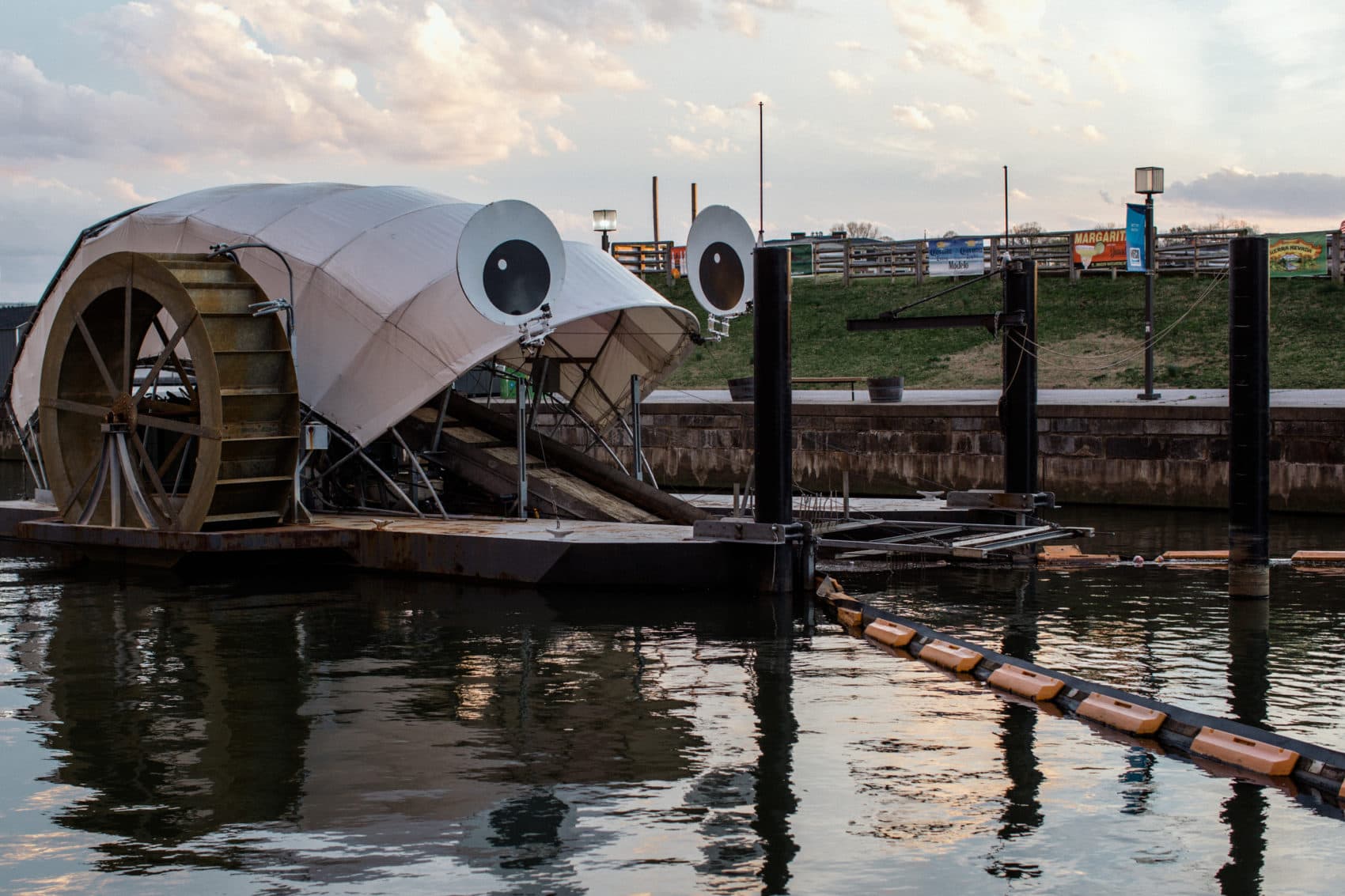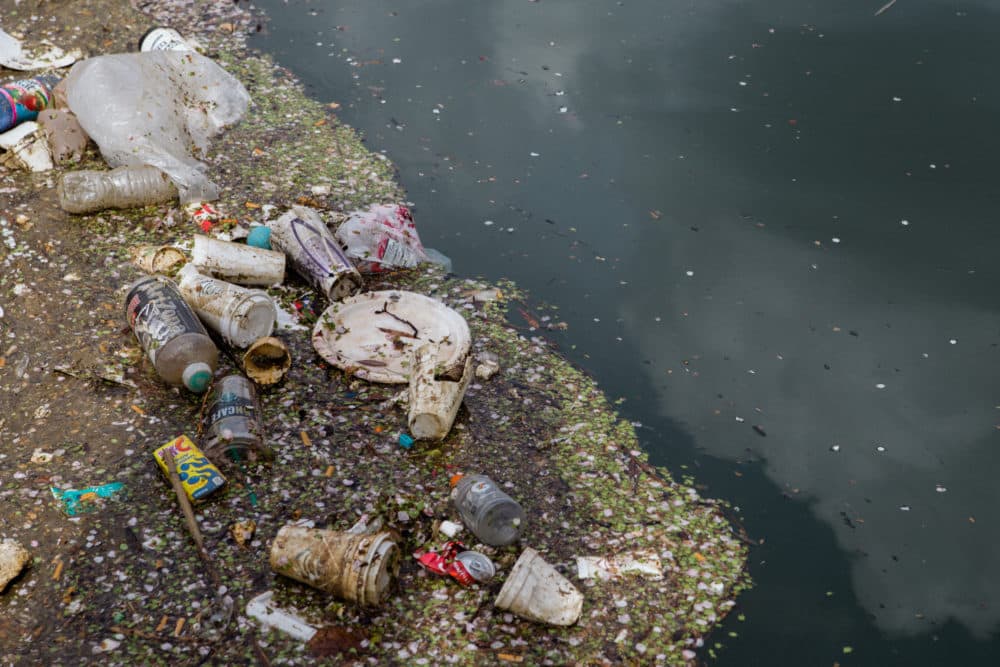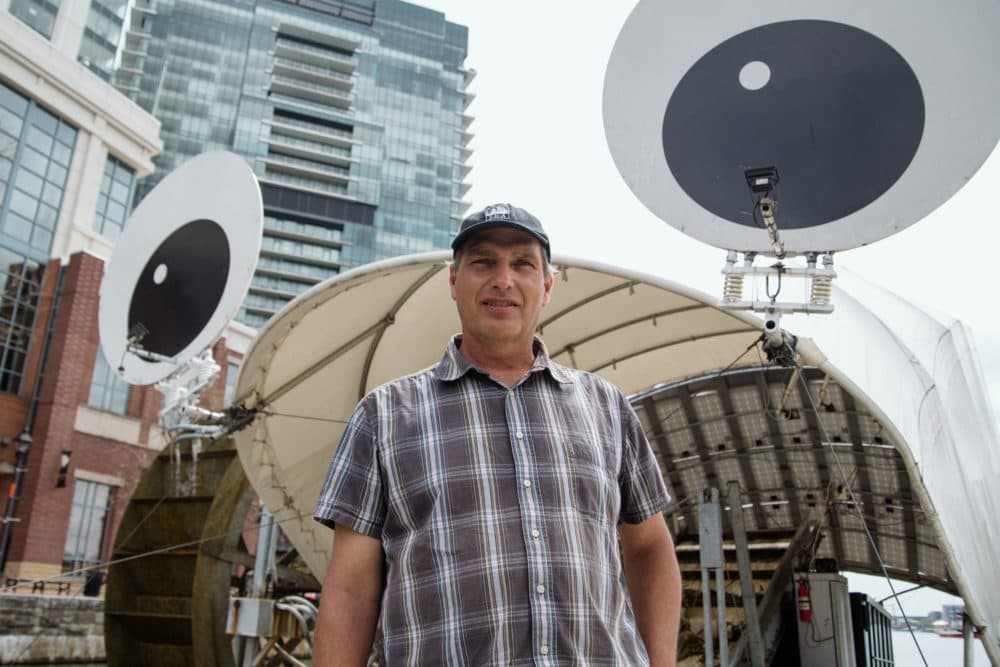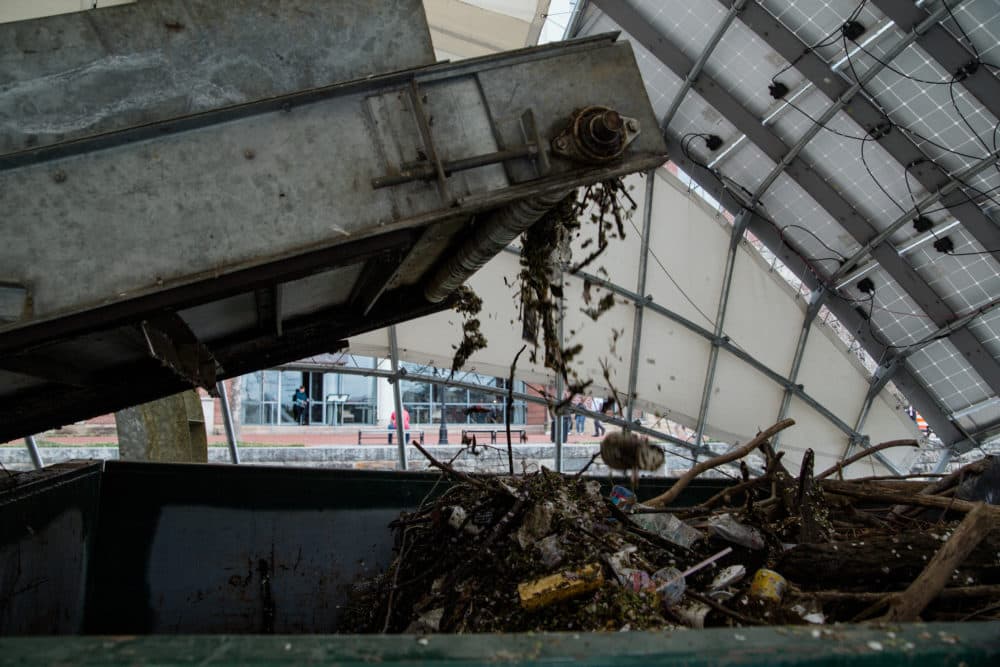Advertisement
Going To Waste
Meet Mr. Trash Wheel: Baltimore Harbor's Googly Eyed Garbage Gobbler

Is your city or town tackling waste in an innovative way? Tell us about it, and we might dig deeper for a Here & Now story as part of our "Going To Waste" series.
Maryland lawmakers last month became the first in the country to approve a statewide ban on Styrofoam food containers.
And a local Baltimore celebrity may have had a little something to do with the new policy.
Mr. Trash Wheel — and his cousins Professor Trash Wheel and Captain Trash Wheel — have scooped up a million Styrofoam containers since the first one was installed on a tributary leading to the Baltimore Harbor in 2014.
In that time, the city's "trash interceptors" — and their cartoonishly charming personas — have developed a loyal following on social media.
Adam Lindquist, the director of the Waterfront Partnership's Healthy Harbor Initiative, says over the years teams of volunteers have helped sort through bins of collected trash to count the Styrofoam containers and plastic bottles.
"The photos that we take from those events — and data we collect — we share with elected officials who get angry, too," Lindquist says. "They don't want to see all that Styrofoam ending up in our waterways."
All told, the wheels have gobbled up:
- More than 11 million cigarette butts
- More than 850,000 plastic bottles
- 627,000 plastic bags
- A beer keg
- One guitar

"It's really prompted a culture of behavior change in Baltimore city, and legislative change both here in the city and at the state level," says Lindquist, citing a similar Styrofoam ban approved in Baltimore city last year.
The man who invented the technology, John Kellett, spent 20 years working along the city's waterfront watching piles of trash floating in the iconic waterway.
He decided to build a machine that would clean it up.
"We're really the last best place to stop it before it gets spread out into the larger harbor and eventually the Chesapeake Bay," Kellett says.

The technology is relatively simple: Two booms extend from a floating barge on the Jones Falls, a nearly 18-mile-long stream which flows into the harbor. The booms extend all the way to the stream's concrete banks. Water can flow on into the bay, but the trash cannot. Cups, bottles, plastic bags and floating debris are funneled toward the mouth of a conveyor belt on the barge, which then moves it to a dumpster.
A water wheel uses the current of the river to power the machine, along with a few backup solar panels.
"After it rains, we've taken out 12 dumpsters after a single storm," Kellett says.

Almost all of that trash — 1,100 tons and counting since the wheels began operating — comes from the city streets. When people toss garbage out a window or when a trash bin overflows, the debris is eventually washed into storm drains, where it then finds its way into a tributary that leads to the ocean.
"It comes from land-based sources," Kellett says. "It doesn't come from cruise ships throwing their beer bottles over the side."
Many experts who track the issue of plastic in the world's oceans say part of the solution is stopping it before it ever reaches the water. Kellett has plans to do that by installing trash wheels in other cities in California, New York and Hawaii, and even abroad in countries like Indonesia.
He says his inventions are "a treatment for the symptom of the disease, rather than a cure for the disease."
The real cure, Kellett says, is changing behavior and lifestyles.
"Everything you buy comes in a disposable package. You're not going to solve that by putting trash wheels everywhere," he says.
This segment aired on April 16, 2019.
